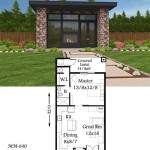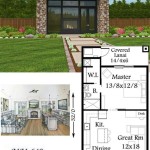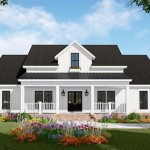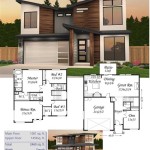Lake house floor plans are architectural blueprints that outline the layout and design of a house specifically intended to be built near or on a lakefront. These plans typically consider factors such as maximizing waterfront views, incorporating outdoor living spaces, and ensuring proper drainage in a lakefront environment.
Whether you’re looking to design a cozy retreat for weekend getaways or a spacious year-round residence, lake house floor plans offer a wide range of options to suit your needs. From traditional cabins to modern lakefront mansions, these plans can accommodate varying lot sizes, budgets, and architectural styles.
In this article, we will explore the key elements and considerations involved in designing lake house floor plans. We will delve into different room layouts, outdoor spaces, and structural features that optimize the unique characteristics of a lakefront property.
When designing lake house floor plans, there are several important points to consider:
- Maximize waterfront views
- Incorporate outdoor living spaces
- Ensure proper drainage
- Consider lot size and shape
- Plan for natural light and ventilation
- Choose durable and low-maintenance materials
- Incorporate energy-efficient features
- Consider accessibility and safety
- Factor in future expansion or changes
By taking these factors into account, you can create a lake house floor plan that optimizes the unique characteristics of your waterfront property and provides a comfortable and enjoyable living experience.
Maximize waterfront views
When designing a lake house floor plan, one of the most important considerations is how to maximize waterfront views. This can be achieved through a variety of design strategies, including:
- Large windows and glass doors: Installing large windows and glass doors along the waterfront side of the house allows for expansive views of the lake. Consider using floor-to-ceiling windows or sliding glass doors to create a seamless connection between the indoor and outdoor spaces.
- Open floor plan: An open floor plan, with minimal walls and obstructions, allows for uninterrupted sightlines to the waterfront from multiple rooms in the house. This type of layout is especially effective in great rooms or living areas that are designed to take advantage of the views.
- Elevated decks and balconies: Decks and balconies that are elevated above the ground level provide a panoramic view of the lake and surrounding landscape. These outdoor spaces can be used for dining, entertaining, or simply relaxing while enjoying the scenery.
- Rooftop terraces: For houses with multiple stories, a rooftop terrace can offer stunning 360-degree views of the lake and its surroundings. This type of outdoor space is perfect for entertaining guests or simply enjoying the sunset.
By incorporating these design strategies into your lake house floor plan, you can create a home that takes full advantage of its waterfront location and provides breathtaking views of the lake from multiple vantage points.
Incorporate outdoor living spaces
Lake houses are all about enjoying the outdoors, so it’s important to incorporate outdoor living spaces into your floor plan. This can be done in a variety of ways, depending on the size and layout of your property. Here are a few ideas:
- Patios and decks: Patios and decks are a great way to extend your living space outdoors. They can be used for dining, entertaining, or simply relaxing while enjoying the views. Patios are typically made of concrete or pavers, while decks are made of wood or composite materials. Both patios and decks can be covered or uncovered, depending on your needs and preferences.
- Screened porches and sunrooms: Screened porches and sunrooms are a great way to enjoy the outdoors without having to worry about bugs or bad weather. Screened porches are enclosed with screens, while sunrooms are enclosed with glass. Both types of spaces can be furnished with comfortable seating and dining areas, and they can be used for a variety of activities, such as reading, watching TV, or simply relaxing.
- Fire pits and outdoor fireplaces: Fire pits and outdoor fireplaces are a great way to extend your enjoyment of the outdoors into the cooler months. They can be used for cooking, gathering around with friends and family, or simply enjoying the ambiance of a fire. Fire pits are typically made of metal or stone, while outdoor fireplaces are made of brick or stone. Both types of features can be built into your patio or deck, or they can be freestanding.
- Outdoor kitchens: Outdoor kitchens are a great way to take your cooking and entertaining outdoors. They can be equipped with a variety of appliances, such as grills, stoves, refrigerators, and sinks. Outdoor kitchens can be built into your patio or deck, or they can be freestanding. They are a great way to enjoy the outdoors while cooking and entertaining your guests.
By incorporating outdoor living spaces into your lake house floor plan, you can create a home that is perfect for enjoying the outdoors and all that lakefront living has to offer.
In addition to the ideas listed above, there are many other ways to incorporate outdoor living spaces into your lake house floor plan. The best approach will depend on the specific needs and preferences of your family. By carefully considering your options, you can create a home that is both functional and beautiful, and that provides you with years of enjoyment.
Ensure proper drainage
Proper drainage is essential for any home, but it is especially important for lake houses. This is because lake houses are often built in areas with high water tables and are subject to flooding. Inadequate drainage can lead to a variety of problems, including water damage to the foundation, walls, and floors, as well as mold and mildew growth.
There are a number of ways to ensure proper drainage around your lake house. One important step is to install a drainage system around the perimeter of your home. This system should include gutters and downspouts to collect rainwater and direct it away from your foundation. You should also install a sump pump in your basement to remove any water that seeps into your home.
In addition to installing a drainage system, you should also take steps to grade your property properly. This means that the land around your home should slope away from the foundation to help water drain away. You should also avoid planting trees and shrubs too close to your home, as their roots can block drainage pipes and cause water to pool around your foundation.
By taking these steps to ensure proper drainage, you can help protect your lake house from water damage and other problems.
Consider lot size and shape
The size and shape of your lot will have a significant impact on the design of your lake house floor plan. Here are a few things to consider:
Lot size: The size of your lot will determine the overall size of your house. A larger lot will give you more flexibility in terms of the size and layout of your home. However, it is important to keep in mind that larger lots also tend to be more expensive.
Lot shape: The shape of your lot will also affect the design of your home. A rectangular lot is the most common and easiest to work with. However, a lot with an irregular shape may require a more creative approach to design.
Slope: The slope of your lot will also need to be taken into consideration. A lot with a steep slope may require a home with a split-level or walk-out basement. A lot with a gentle slope will be easier to build on and may allow for a more traditional floor plan.
Setbacks: Setbacks are the minimum distances that your home must be set back from the property lines. Setbacks are typically determined by local zoning regulations. It is important to be aware of the setbacks on your lot before you start designing your home.
By carefully considering the size, shape, slope, and setbacks of your lot, you can create a lake house floor plan that is both functional and beautiful.
Paragraph after details
Once you have considered all of the factors discussed above, you can start to develop a floor plan for your lake house. It is important to keep in mind that there is no one-size-fits-all approach to lake house design. The best floor plan for your home will depend on your specific needs and preferences.
If you are not sure where to start, you may want to consult with an architect or home designer. A professional can help you create a floor plan that is tailored to your specific needs and that takes into account all of the factors discussed above.
Plan for natural light and ventilation
Natural light and ventilation are essential for any home, but they are especially important for lake houses. This is because lake houses are often built in areas with beautiful scenery, and natural light and ventilation can help to bring the outdoors in.
There are a number of ways to plan for natural light and ventilation in your lake house floor plan. One important step is to choose the right windows and doors. Windows should be placed strategically to allow for maximum natural light. For example, you may want to place large windows in the living room and dining room to take advantage of the views of the lake. You may also want to install skylights in the kitchen and bathrooms to bring in additional natural light.
In addition to choosing the right windows and doors, you should also consider the orientation of your home. The orientation of your home will determine how much sunlight it receives. If you want your home to be filled with natural light, you should orient it so that the majority of the windows face south. This will allow your home to take advantage of the sun’s natural light throughout the day.
Finally, you should also consider the use of passive solar design. Passive solar design is a way of designing a home to take advantage of the sun’s natural heat and light. By using passive solar design techniques, you can reduce your energy consumption and create a more comfortable living environment.
By following these tips, you can create a lake house floor plan that is filled with natural light and ventilation. This will help to create a more comfortable and enjoyable living environment for you and your family.
Choose durable and low-maintenance materials
When choosing materials for your lake house, it is important to consider durability and low maintenance. This is especially important for exterior materials, which will be exposed to the elements. Here are a few things to keep in mind:
- Exterior siding: Vinyl, fiber cement, and metal siding are all good choices for lake houses. These materials are durable, low maintenance, and can withstand the elements.
Details:
- Vinyl siding is a popular choice because it is affordable, easy to install, and comes in a variety of colors and styles.
- Fiber cement siding is a more durable option than vinyl siding. It is also fire resistant and insect resistant.
- Metal siding is the most durable option, but it is also the most expensive.
- Roofing: Asphalt shingles, metal roofing, and slate roofing are all good choices for lake houses. These materials are durable, low maintenance, and can withstand the elements.
Details:
- Asphalt shingles are the most popular choice for roofing because they are affordable and easy to install.
- Metal roofing is a more durable option than asphalt shingles. It is also fire resistant and wind resistant.
- Slate roofing is the most durable and longest-lasting option, but it is also the most expensive.
- Decking: Composite decking, PVC decking, and wood decking are all good choices for lake houses. These materials are durable, low maintenance, and can withstand the elements.
Details:
- Composite decking is a popular choice because it is affordable, easy to install, and comes in a variety of colors and styles.
- PVC decking is a more durable option than composite decking. It is also splinter-resistant and fade-resistant.
- Wood decking is the most traditional option, but it requires more maintenance than composite or PVC decking.
- Windows and doors: Vinyl windows and doors, fiberglass windows and doors, and aluminum windows and doors are all good choices for lake houses. These materials are durable, low maintenance, and can withstand the elements.
Details:
- Vinyl windows and doors are the most popular choice because they are affordable, easy to install, and come in a variety of colors and styles.
- Fiberglass windows and doors are a more durable option than vinyl windows and doors. They are also more energy-efficient.
- Aluminum windows and doors are the most durable and energy-efficient option, but they are also the most expensive.
By choosing durable and low-maintenance materials for your lake house, you can reduce the amount of time and money you spend on maintenance. This will allow you to enjoy your lake house more and spend less time worrying about repairs.
Incorporate energy-efficient features
Incorporating energy-efficient features into your lake house floor plan can help you save money on your energy bills and reduce your environmental impact. Here are a few things to consider:
- Insulation: Proper insulation is one of the most important energy-efficient features you can incorporate into your lake house. Insulation helps to keep your home warm in the winter and cool in the summer, reducing the amount of energy you need to heat and cool your home.
- Windows and doors: Energy-efficient windows and doors can help to reduce heat loss and gain, saving you money on your energy bills. Look for windows and doors with a high Energy Star rating.
- Appliances: Energy-efficient appliances can also help you save money on your energy bills. Look for appliances with a high Energy Star rating.
- Lighting: Energy-efficient lighting can help you save money on your energy bills and reduce your environmental impact. Look for light bulbs with a high Energy Star rating.
By incorporating these energy-efficient features into your lake house floor plan, you can save money on your energy bills, reduce your environmental impact, and create a more comfortable living environment.
Consider accessibility and safety
When designing your lake house floor plan, it is important to consider accessibility and safety. This is especially important if you have young children or elderly family members who will be using the home.
Here are a few things to consider:
- Wide doorways and hallways: Wide doorways and hallways will make it easier for people to move around the house, especially if they are using a wheelchair or walker.
- Non-slip flooring: Non-slip flooring will help to prevent falls, especially in areas where there is likely to be water, such as the kitchen and bathrooms.
- Grab bars: Grab bars can be installed in the bathroom and other areas of the house to provide support and stability.
- Ramps: Ramps can be installed to provide access to different levels of the house, such as the deck or patio.
By considering accessibility and safety in your lake house floor plan, you can create a home that is both comfortable and safe for everyone to enjoy.
Factor in future expansion or changes
When designing your lake house floor plan, it is important to factor in future expansion or changes. This is especially important if you think you may want to add on to your home in the future, or if you want to be able to adapt your home to your changing needs as you age.
Here are a few things to consider:
- Design a flexible floor plan. A flexible floor plan is one that can be easily adapted to different needs. For example, you may want to design a home with an open floor plan that can be easily divided into smaller rooms if needed. You may also want to consider designing a home with a modular design, which allows you to add on to your home in the future without having to make major structural changes.
- Leave room for expansion. When designing your home, be sure to leave room for future expansion. For example, you may want to leave space for a future addition, or you may want to design your home with a basement that can be finished later on. You may also want to consider purchasing a lot that is large enough to accommodate future expansion.
- Choose durable materials. When choosing materials for your home, be sure to choose durable materials that will last for many years. This will help to ensure that your home is able to withstand the test of time and any changes you may make to it in the future.
- Consider your future needs. When designing your home, be sure to consider your future needs. For example, if you think you may need a wheelchair in the future, you may want to design your home with wide doorways and hallways. You may also want to consider installing grab bars in the bathroom and other areas of the house.
By factoring in future expansion or changes, you can create a lake house that is both flexible and adaptable. This will help to ensure that your home meets your needs for many years to come.










Related Posts








